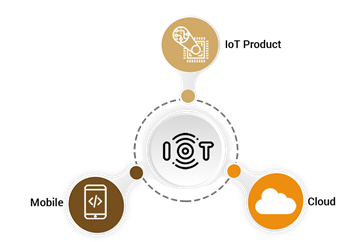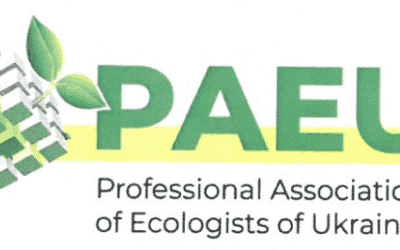Reasons to select a specialised IoT company over a standard one for connected app development

Today, there are around 26.66 billion Internet of Things (IoT) devices in the market and the number is projected to rise to 75.44 billion devices by 2025. With the rapid proliferation of IoT devices, more connected mobile apps will be required to allow users to access devices from anywhere over the internet.
The connected mobile application acts as a main interface for controlling IoT devices, says Prima Saraiya. It helps user to connect to device remotely and monitor the functionality of devices which makes connected mobile app is a key to any IoT Solutions.
Difference between connected apps and standard apps for mobile
A standard app provides the content to the user from predefined values or cloud using APIs. While a connected solution consists of an IoT device, cloud, and mobile app which collectively and seamlessly work together to provide the best user experience in real-time. Connected IoT applications are more complex in nature as compared to standard mobile applications
Components associated with IoT
IoT products (data generation)
There can be two kind of IoT products interacting with the connected app. One is IoT Gateway and other is End devices/Sensors. Depending upon the end user industry application, in the solution it may vary that connected app is communicating to directly sensors/devices or IoT Gateway or to both the kind of products. Primarily the products are the key component in generating required data and helping them to transfer to IoT Cloud.
IoT cloud (Data processing)
Data collected from devices/sensors are transmitted to a cloud infrastructure via gateway through various mediums of communication such as LTE and Wi-Fi networks. The collected data is stored securely on the cloud, where the software processes the acquired data according to user access level and provide access to authentic users or devices only.
Connected app (User interface)
Connected app connect to cloud and collect all the necessary information to based on predefined solution logic. This will help user to make the right decision based on the condition. The user will initiate command to the cloud to perform desire action which will be routed though Gateway to initiate the various commands for their connected devices to implement scenario directed by the user from the app.
Key challenges in developing connected applications
Security & privacy
The biggest challenge is to provide security for user and devices data considering security threat at all levels including application, network and transport layers to prevent data leak or hacking. As it is a connected solution the security breach at app level will have effect on the entire solution. App being a primary control point for the user it makes even more necessary to protect it completely against any such threat
Connectivity
Ensuring real-time connectivity with the system either in the local mode or in the remote mode having a smooth transition is a need of the hour for this kind of critical IoT Solutions. Establishing a resource optimised connectivity of app to IoT eco system is also a one of the key challenges to deliver enhance experience to consumers
Compatibility (OS/IoT Platform & solutions)
IoT development requires a balance of hardware and software functions. It is a challenge for IoT application developers to ensure that device and IoT platform delivers the best performance despite of routine releases from OS, device updates, bug fixes. Companies also should have expertise in the area of globally well-established connected app platform and standards as they help to bring more stability to the solutions
Data collection & processing
Since IoT applications involve a huge amount of data, its collection & processing is a challenge for developers. Along with the privacy and security planning, development teams must consider other aspects like data collection, storage and processing within an environment. Companies who are experience in the IoT solution can help to optimised solution by proposing alternative models or architecture to process only necessary data at the app level.
Hands-on experience
IoT companies have a distinct advantage in what they work closely on like Firmware, Hardware, Mobile and Cloud for various applications, and that comes handy in resolving run-time errors/bugs quickly and effectively in any of the components. Also, they can take up and complete a partly developed application from any stage of its lifecycle.
Cloud development
Experience in cloud services helps to select the right set of services to optimise solution to make it more scalable, secure and cost-effective, thereby proving better data storage and performance for related cloud/mobile APIs, cloud operations required for data backup, security, load balancing etc. and enhancement of services.
Network expertise
IoT companies have in-depth understanding of OSI and Network layers. This expertise facilitates working on specific layers to deliver appropriate security with optimised communication approach for IoT devices. This also enables IoT companies to identify issues at specific layers and optimise existing IoT devices for communication with the mobile app.
Identify & onboarding of one stop solution provider
Connected app being a critical part of overall solution, it is absolutely necessary to understand the larger picture of the entire solution. Companies who are experienced in the domain of IoT can deliver an overall success due to some of the following key competences they can deliver.
| Mobile App Development Company | Connected Solution Development Company |
| Optimising API from mobile prospective only | Optimising API from mobile as well as embedded device prospective, that helps think deeper to optimise up to level of embedded device. Also, creates and optimises API from cloud side that provide benefits of reduced data processing and reduced time consumption for API call in mobile app |
| Hands on communication protocol required for API calling only, like HTTP/HTTPS, JSON, SOAP | Hands on communication protocol required for API from mobile and cloud prospective as well as from device perspective, like HTTP/HTTPS, Socket, MQTT, MQS |
| Designs solution which can work better on software layer of OS architecture | Designs solutions which can work better on software, native, hardware level to deliver performance, scalability, flexibility in connected solution to get build optimised solution based on end consumer needs |
| Creates security for Mobile app only | Creates security for Mobile app, cloud, backend app and embedded devices, giving 360 security |
One stop solution provider for connected solution, who are well versed with architecture of all the components of an IoT ecosystem. They can develop a better-connected app which can survive market volatility and can easily accommodate new features/changes in the future. Issues at the hardware or firmware level can also be identified easily and the necessary corrections can be made on time. Thus, businesses should opt for specialised IoT companies over standard ones to develop their connected applications for any IoT solution.
With the experience gained by an IoT company while developing an IoT app, they help reduce development time and cost, as well as add value as compared to generic software development companies. This ensures accelerated product launch timelines for the client.
For more information, click here.
The author is Prima Saraiya, senior marketing executive, Volansys
About the author
The author, Prima Saraiya, is associated with VOLANSYS as a senior marketing executive with proven experience in digital marketing, lead generation, collateral development, brand promotions, partner relationships, and events management.
Comment on this article below or via Twitter:
Recent Posts
- What Is an Exoskeleton Suit?
- Where can you use an ultrasonic motor?
- Smart Camera: System That You Can Use for a Wide Variety of Purposes
- Why Is the Smart Toothbrush Better Than a Regular One?
- Microcontrollers: An Integral Part of Embedded Hardware
- Air Quality Monitoring System: Why It’s So Important in Modern Realities

